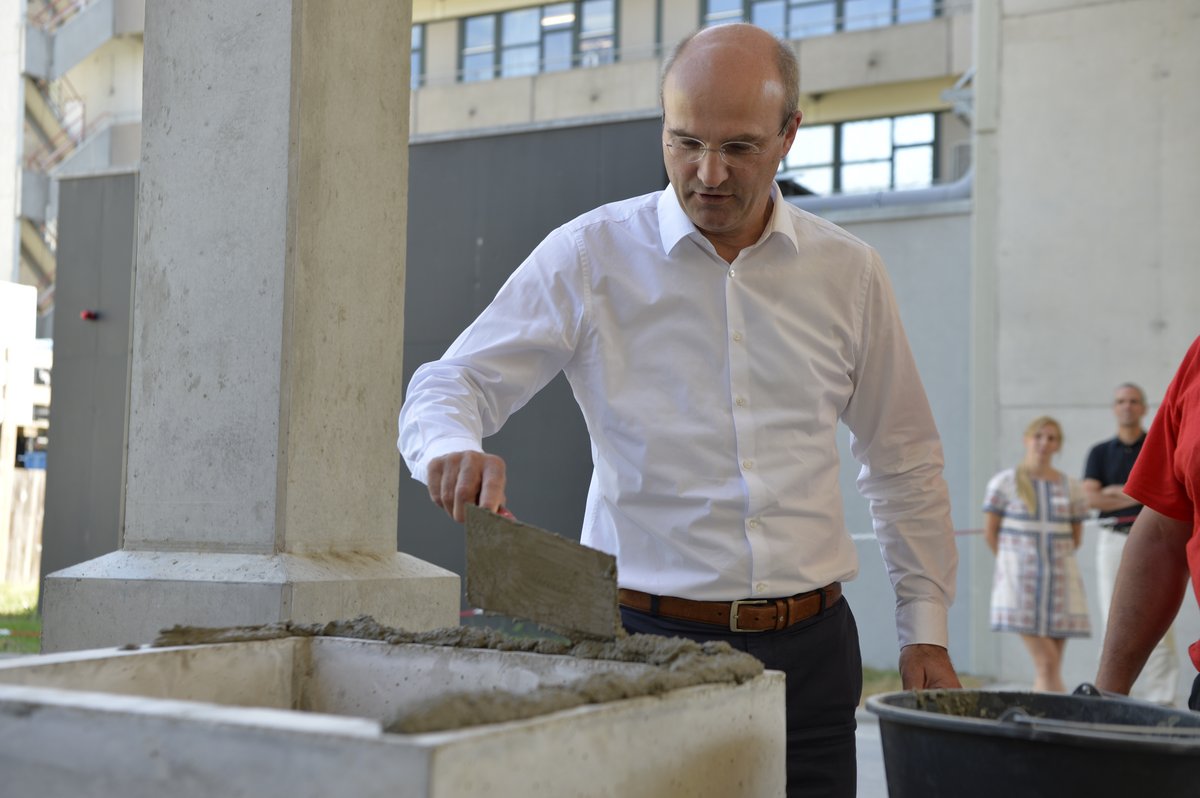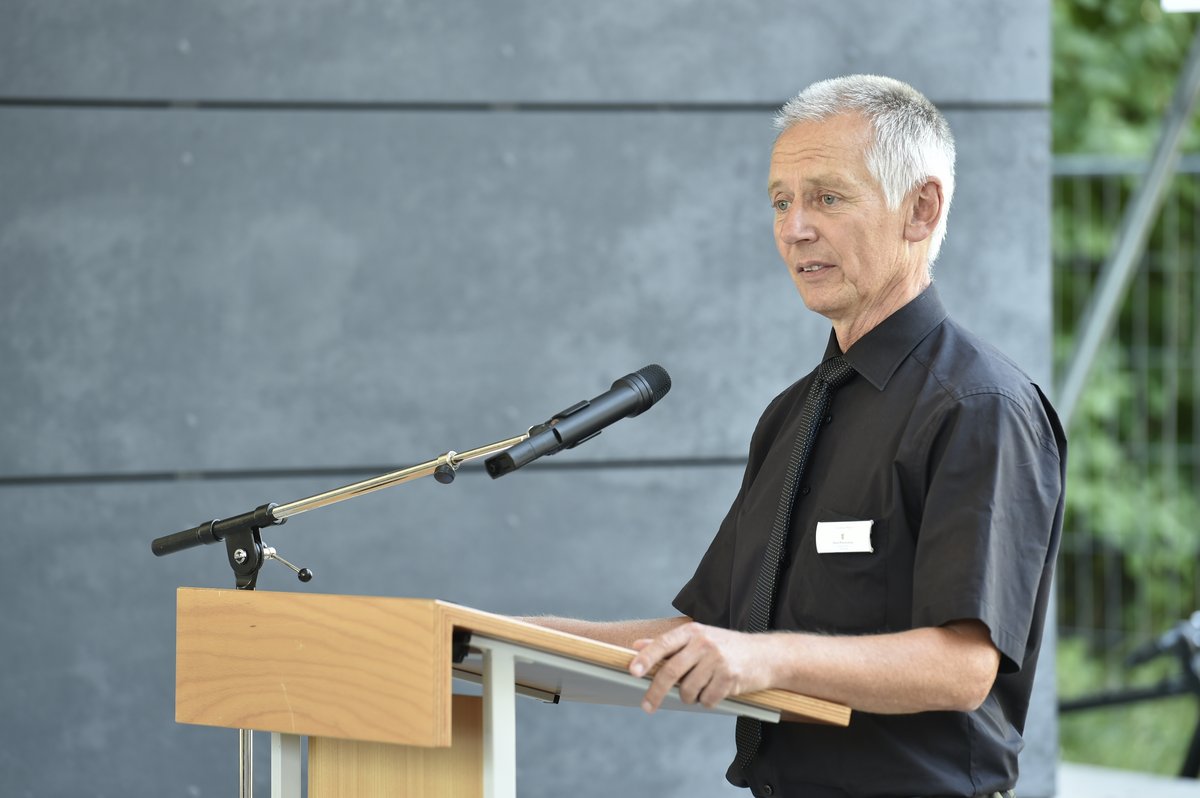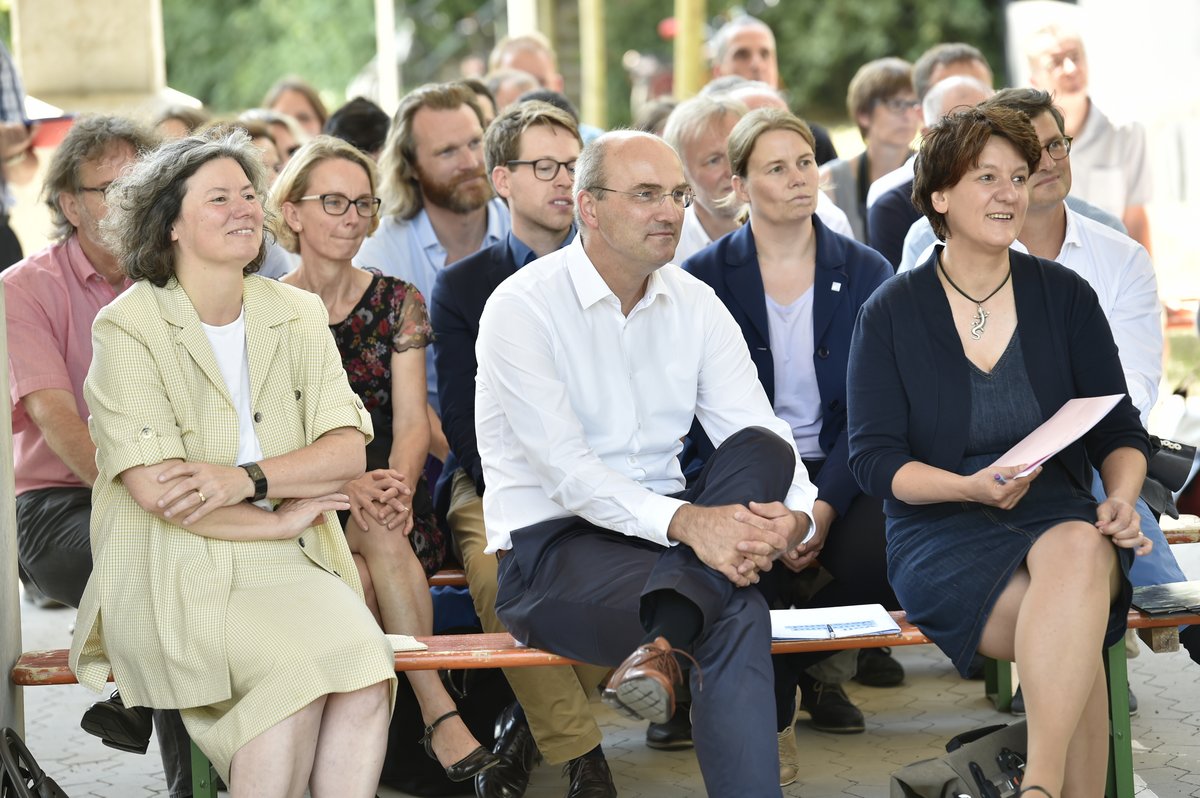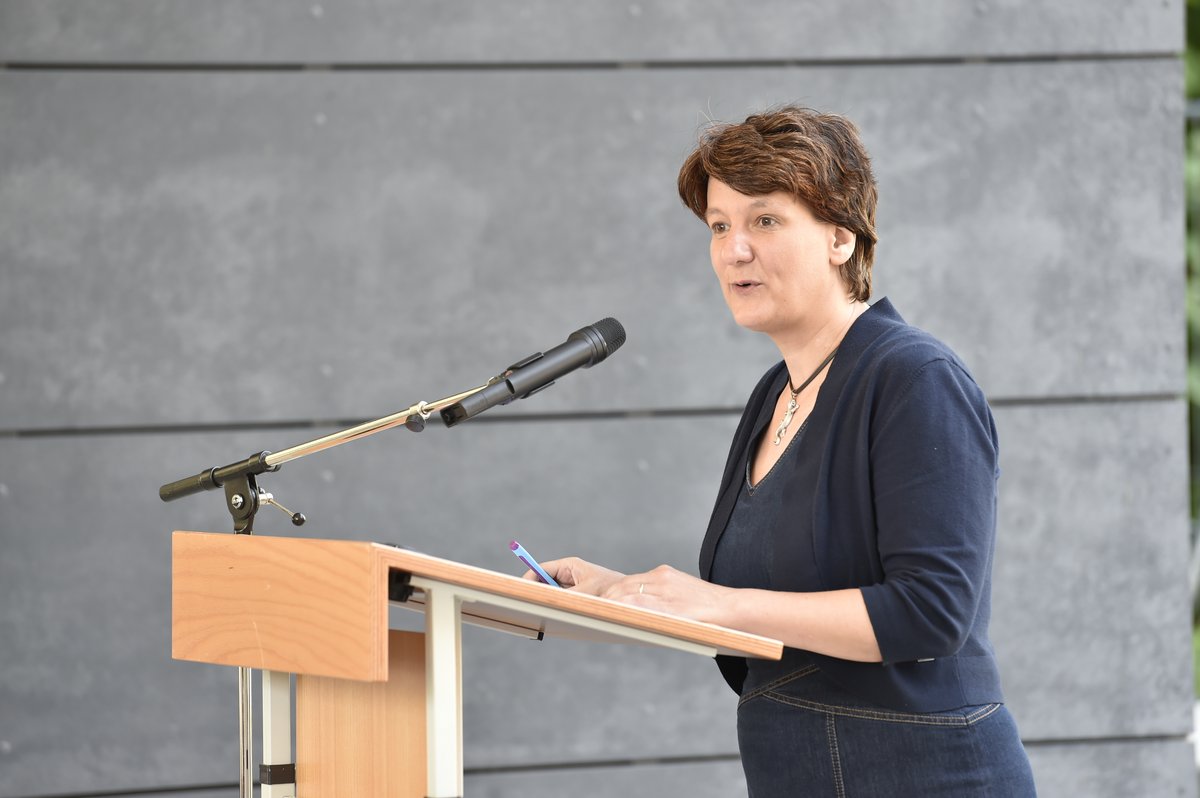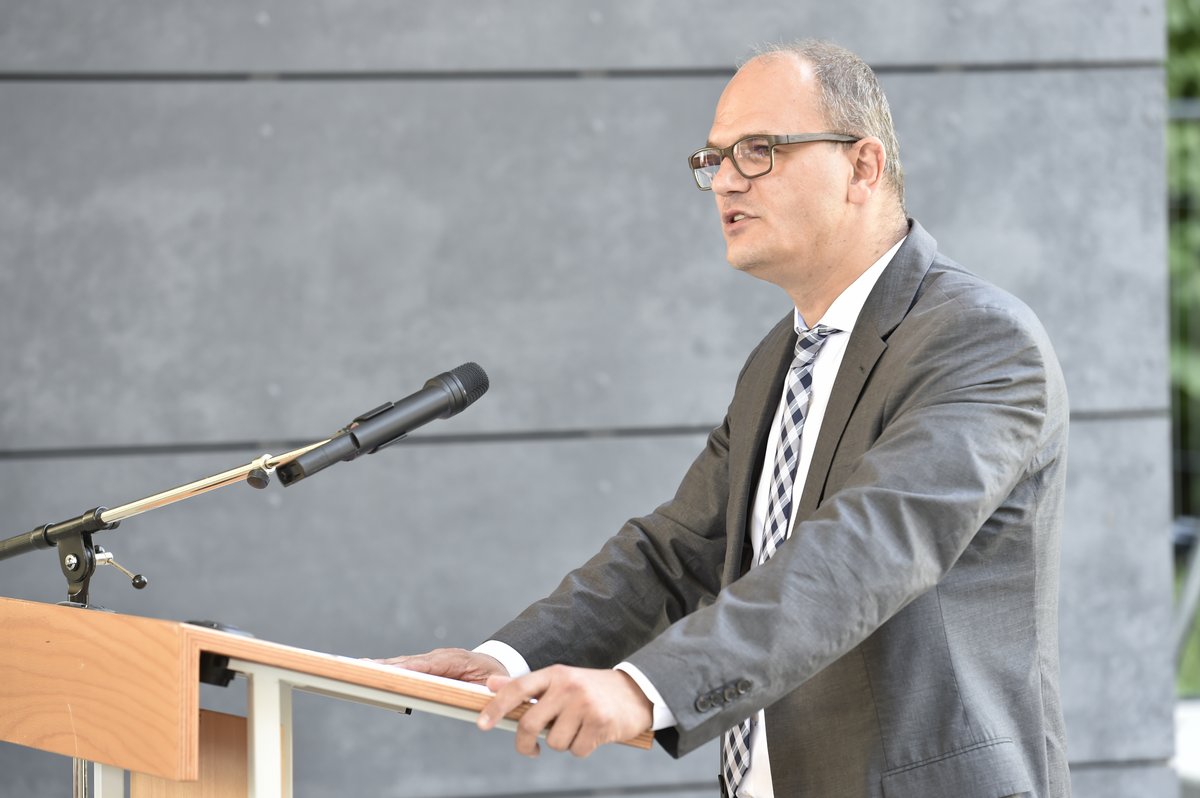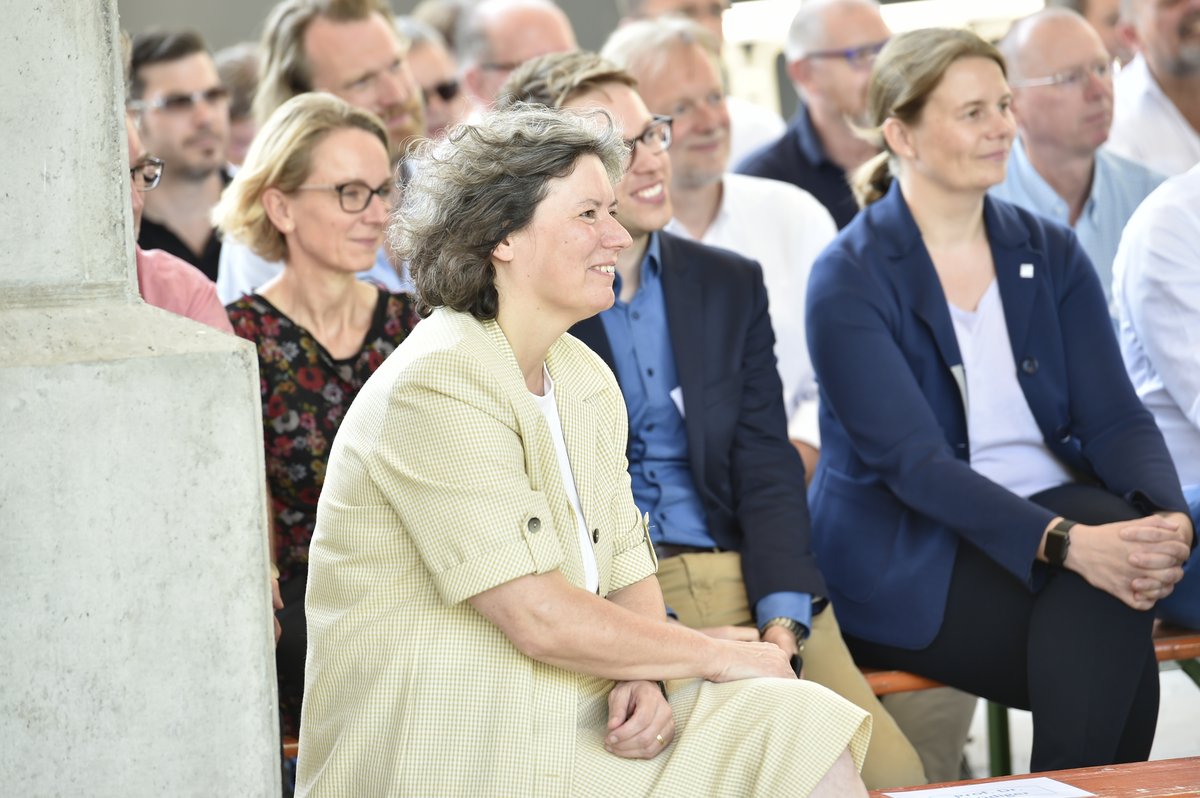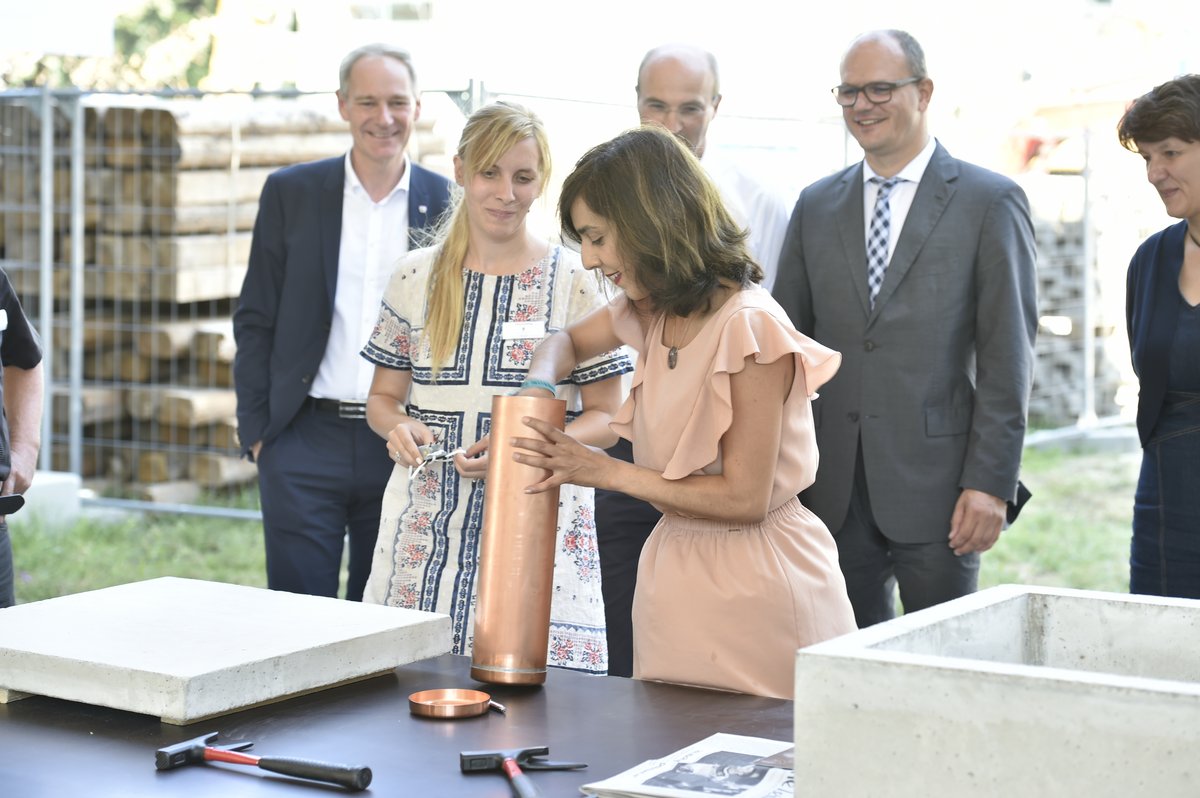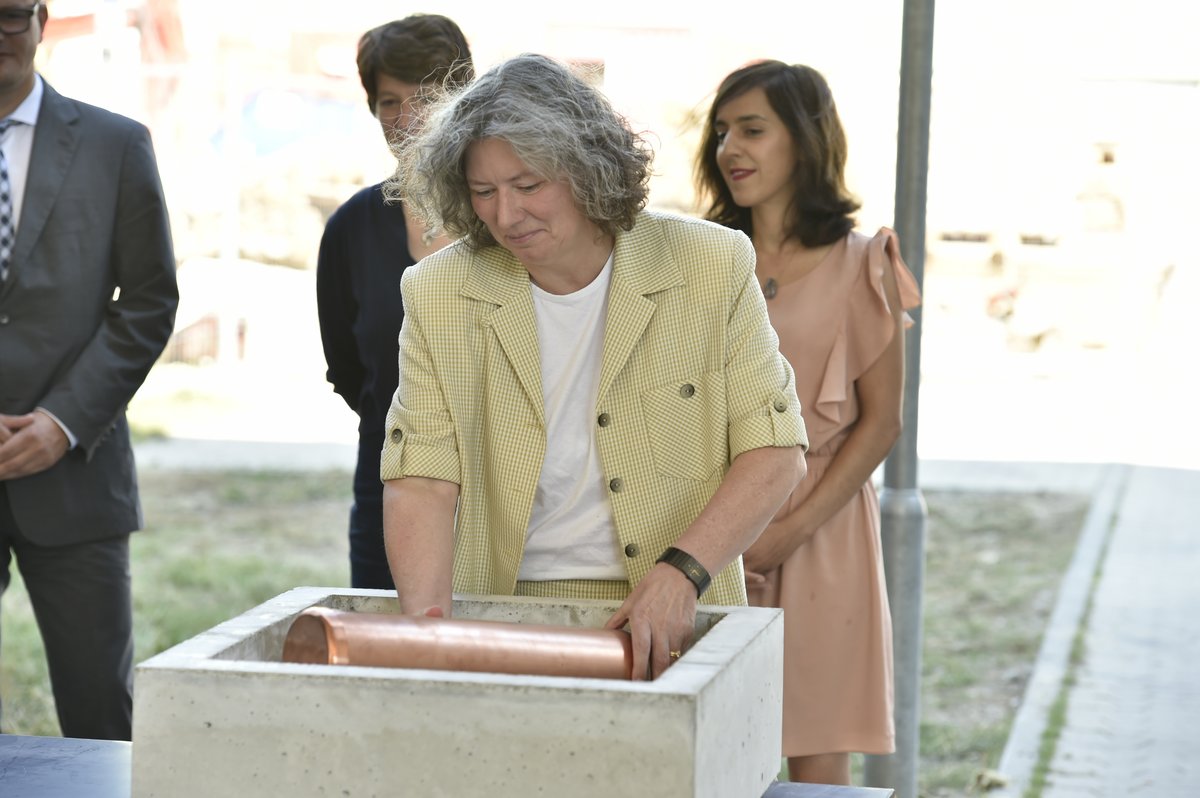Opening of the VCC
On 24 July 2018, the foundation stone was laid for the “Center for Visual Computing of Collectives” (VCC), a new top-level research centre at the University of Konstanz for the study of swarming and collective behaviour. The joint exploration of collective behaviour by biologists and computer scientists is one example of the interdisciplinary approach adopted by the University of Konstanz.
With its new “Center for Visual Computing of Collectives” (VCC), the University of Konstanz is building an interdisciplinary research centre for the study of collective animal behaviour and its underlying mechanisms and consequences in nature. The research carried out at the VCC will be based on the analysis and visualisation of mass data. Understanding the principles of animal behaviour is crucial in a variety of practical contexts, ranging from being able to predict pests (e.g. locust plagues) to controlling autonomous robots (e.g. self-driving cars) while also shedding new light on group behaviour among humans (e.g. during mass panics).
The building, which is due for completion in 2021, will provide space for state-of-the-art research infrastructure on eight floors. 120 behavioural biologists and specialists for data analysis will work in seven specialist laboratories to collect data about animal collectives and to study collective animal behaviour.
The foundation stone is laid
The mayor of Konstanz, Karl Langensteiner-Schönborn, Ministerialdirektor Ulrich Steinbach, Professor Ulrich Rüdiger, rector of the University of Konstanz, member of the Landtag Nese Erikli, secretary of state Gisela Splett and the designated rector of the University of Konstanz, Professor Kerstin Krieglstein, made sure that the foundation stone was well sealed. Prior to that, a time capsule was placed inside it, containing the architectural drawings of the building, a USB drive with research data, a complete set of 2018 coins, a copy of the day’s newspaper, a copy of the foundation charter as well as an e-obs tag used for tracking animals.

